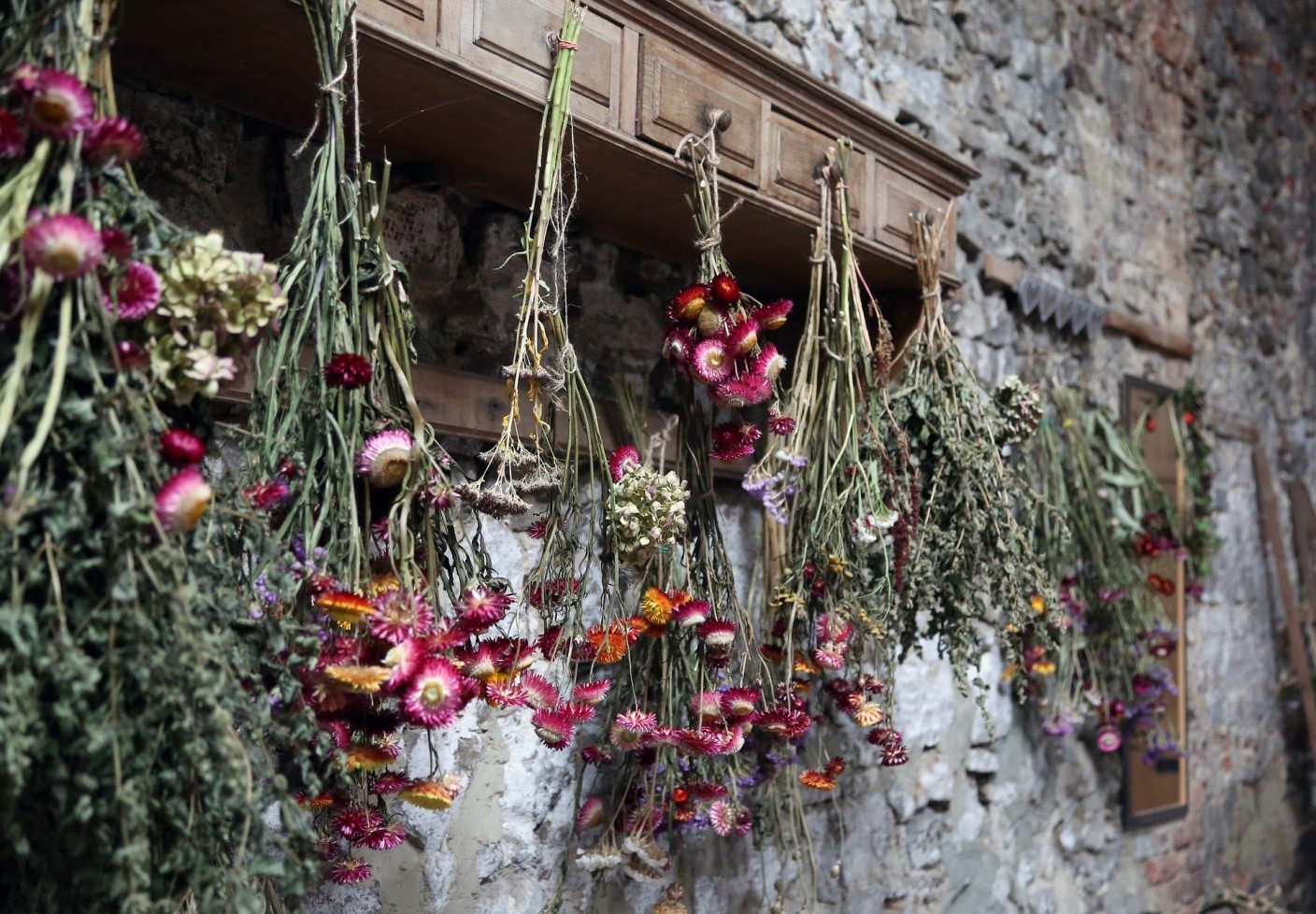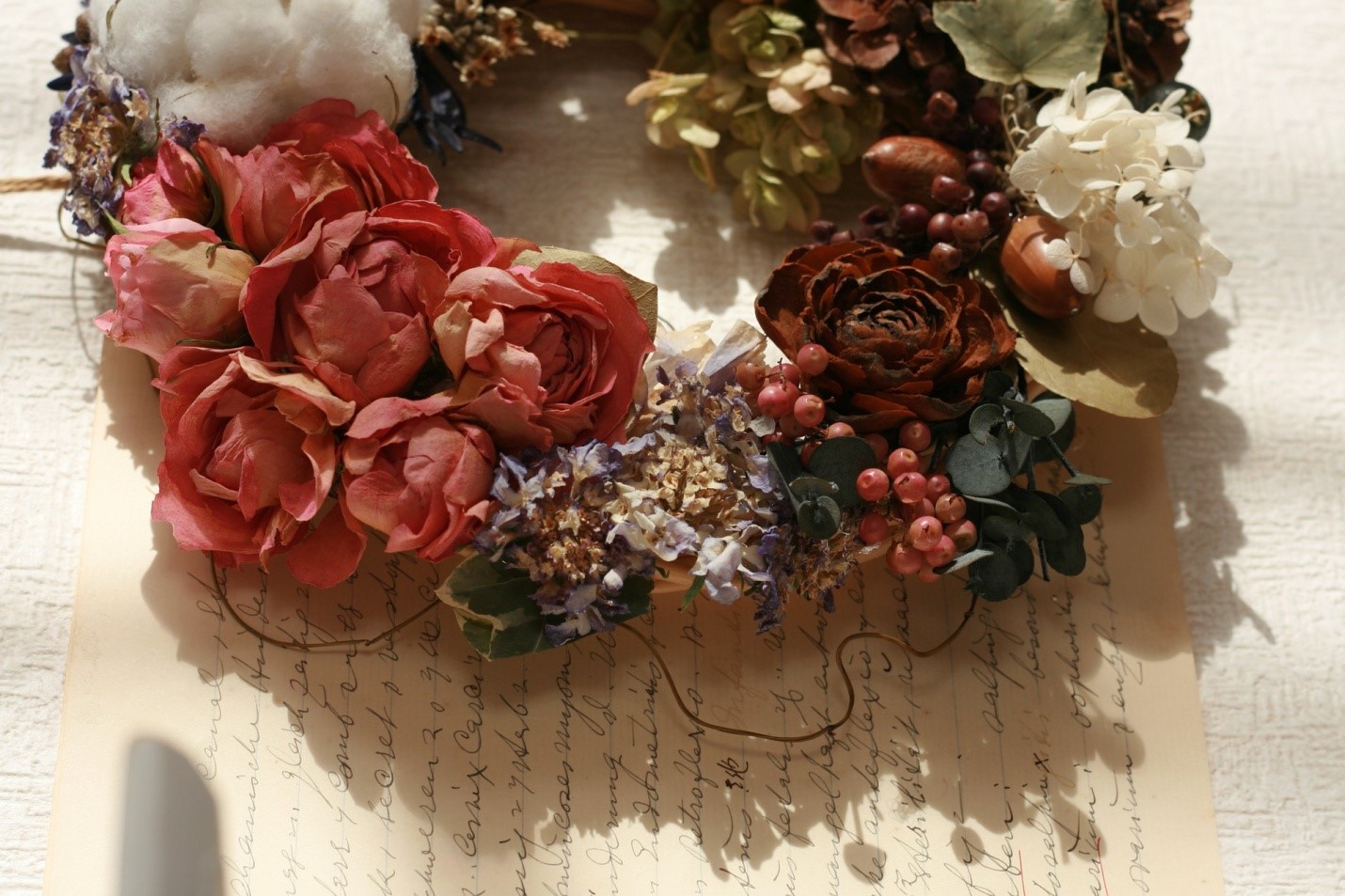Dried Flower Decor

Get to Know Dried Flowers
Can’t keep plants alive? Fresh cut flowers not your cup of tea? When you just can’t maintain a garden and keeping a bouquet of fresh flowers fresh appear to be as anxiety-inducing too as gardening, you can always resort to dried flowers. They don’t have to be watered, are available in all colours and sizes, last longer, and perfect for all seasons.

You can buy dried flowers or you can try your hand at drying fresh flowers. The former is the easier way, of course. Best for those who do not have the luxury of time to revamp the look of their home, store-bought dried flowers can easily give any space an impressive makeover. Let’s walk you through the basics of using dried flowers in enhancing the look and feel of any room.
What are Dried Flowers?
Dried flowers are basically lifeless blooms. They are dried or preserved using a number of techniques including microwave drying, the use of silica gel, wax dipping, by pressing, air drying, and well, forgetting about them after placing in a vase.
The simplest and most traditional technique for drying flowers is hanging bunches of them upside down in a well-ventilated area without direct sunlight.

Dried flowers have partially maintained their quality. They may not have the fresh look and vibrant colour but their form is still intact. They are still attractive and they have that dramatic look and allure that you just can’t see in a dewy, bold and vividly-coloured fresh blossom.
How to Make Dried Flowers?
We think you can capture nature’s fleeting blooms for year-round enjoyment through drying, an easy technique for gracefully preserving flowers. When picked at peak vibrancy, hand-processed blossoms transition into long-lasting decorative accents.
Airy and gently warmed environments allow moisture to slowly evaporate from each delicate petal and leaf over 1-3 weeks without heat damage. Home methods involve hanging stems upside down in dark spaces like attics or garages away from direct light. Commercial dryers use regulated low heat under 43°C to dehydrate numerous stems placed on slotted shelving.
Patience lets moisture fully dissipate while maintaining shape and colour. Monitor progress frequently at first. Crispness signals completion but leaves some flexibility versus brittleness. Trim away foliage once dried. Store finished flowers in breathable boxes.
Before drying, strip lower leaves and cut stems at an angle to maximise water intake. Pick buds that recently opened fully. Discard any petals showing imperfections. Group alike varieties together for even drying.
Preserving natures beauty through drying makes floral designs accessible year-round. With this simple method, seasonal blossoms like hydrangeas become timeless accent pieces enhancing any decor.
How Long Can Dried Flowers Last?
Dried flowers provide a graceful, enduring alternative to fresh-cut blooms. With proper ongoing care, these preserved botanicals continue emanating their delicate splendor for years after harvesting.
On average, most dried flowers last approximately 1-3 years when maintained in a climate-controlled indoor environment away from moisture, dust and direct sunlight. Delicate blossoms like hydrangeas and roses tend to persist on the shorter end of that timeline. Heartier varieties including statice, strawflowers and lignum vitae may continue looking freshly picked for a full 3 years.
In ideal stable conditions absent humidity, the longevity of dried flowers can extend to an impressive 5-6 years. Daily monitoring and occasional grooming removes dust or debris that accumulates. Periodic rearrangements refresh the look. With such special care, the concentrated colour and natural textures retain their depth and dimension over time.
Dried Flower Maintenance
Unlike high-maintenance fresh flowers demanding weekly trimming and water changes, dried botanicals focus caretaking on shielding blossoms from environmental elements over manipulating arrangements. Still, attentive protections proves essential for extending beauty.
By safeguarding delicate dried flowers from dust, direct sunlight and especially moisture, one sustains vivid colour and graceful forms season after season. Protective measures emphasise hygienic dusting and isolation from humidity more than proactive primping. For example, display in low-traffic indoor locales away from humid bathroom environments prevents potential mold growth. Occasional grooming clears any accumulated particles without disturbing the preserved shapes.
With such conscientious buffering from deteriorating factors, dried blossoms thrive beautifully for years with just modest monitoring and minimal handling once initially processed. Their longevity relies more on avoiding disruption than regular intervention. Careful positioning and cleansing better preserves the flowers than extensive manipulation.
Which Flowers are Best for Drying?
The ideal choice would be flowers with low moisture. Everlastings are considered to be the best bloom for drying because they never lose their colour and form even when air-dried. Other blooms that are good in retaining their hue and shape are:
- amaranthus
- globe thistle
- Victoria blue salvia
- strawberry fields gomphrena
- lavender lady gomphrena
- statice
- cockscomb celosia
- bells of Ireland
- strawflowers
- larkspur
Hydrangeas, craspedia flowers, astilbe, and yarrows also make beautiful dried flowers.
Here are Some Standouts
Statice
A favorite filler flower, statice keeps its crisp shape for months. Branching stems produce abundant mini blooms. Harvesting occurs when the dainty inner buds start opening to reveal a flash of white. The optimal moment preserves the intriguing layered flower form.
Lavender
Beyond its visual elegance, lavender elevates arrangements with calming fragrance. Violet blossoms and fragrant leaves hold their scent when gathered as the first lower flowers open. Lavender’s versatility also shines around the home in every season.
Strawflower
True to its nickname “everlasting,” the papery strawflower maintains alluring texture and saturated golden hues for seasons on end. After the center fully opens revealing a dark disc, harvesting at peak vibrancy ensure colour intensity persists unchanged when dried. Foliage removed post-drying highlights the dimensional star-shaped flowers.
Dried Flower Longevity Guide
*With proper care and ideal conditions. Results may vary based on environmental factors.

To complement those beautiful dried blooms are dried greens such as eucalyptus, bunny tail grass, reed grass, plume grass, pampas grass and wrinkled cress. Feel free to add branches of bamboo and dried sweet huck.
Where Can I Display Dried Flowers?
Display the rustic beauty of dried flowers wherever you’d showcase the radiant glow of fresh flowers.
Dried blooms would look perfect when displayed on vessels that have the same raw and rustic charm. Consider vintage milk glasses, apothecary jars, tin cans, coloured bottles like wine bottles, and glass jars as your vase options for dried flowers. And because these blooms no longer no need water, you can also display them on containers other than vases. Think pretty woven totes, baskets, shadow boxes, and picture frames. Hang them on a rustic-looking wood board or turn them into a wreath.
You can still use new and modern vases of course but make sure you choose one that won’t overwhelm or overpower the rugged and unique look of dried flowers.
You can display dried flowers on a fireplace mantel, on your front door, in a hallway, in the bedroom, bathroom – anywhere.

How to Frame Dried Flowers?
Framing elegantly displays delicate dried blossoms for long-lasting enjoyment. Complementary matting, glass options and frame styles keeps arrangements safely shielded while instantly elevating any décor.
Once fully dried and arranged in a composition you wish to preserve, place the botanicals inside a display frame of your choice based on visual weight and room dimensions. Select a smooth acid-free backdrop mat in a fitting hue like light gray, cream or black. For glass, opt for UV protective acrylic or plexiglass to prevent fading.
Carefully position the framed piece out of direct sunlight to retain vibrant colours yet still visibly accent your space. Tabletop vertical easels conveniently exhibit smaller arrangements. For standard wall hanging, implement hanging wire stretched tautly across the frame’s back braced by D-ring anchors.
With framing, your hand-crafted dried flower designs transform into permanent art installations ready to appreciate for years. Case sizes from petite 5”x7” displays to grand 40” statement pieces visual preserve nature’s graceful gifts tilting any room toward beauty.
Dried flowers only lack life; they’re still full of charm and character. Decorating with dried flowers isn’t just for farmhouse or country style-themed spaces. They can work well in modern homes, too, and is very effective in bringing rich texture, creating drama and infusing earthy beauty to dull corners around the house. The muted colours, zero-care requirement, and nostalgic vibe of dried botanicals make them as interesting and decorative as fresh flowers. Give them a try and find one more convenient option to level up the style, look, and feel of your home.
This article was first published on 7.1.20 and published again on 5.11.24. We added a load of new and up to date information about dried flowers including how to make them.
Blog Categories
Recent posts
- From Kingscliff 2007 to Now: Why June Weddings Beat the Summer Heat (and the Flowers to Prove It)
- What 17 Years of Orders Taught Us About Toowoomba’s Flower Tastes
- 12 Christmas Wreath Decorating Ideas and Tips
- Do’s and Don’ts When Sending Christmas Flower Gifts
- The Significance of Christmas Colours in Flower Arrangements
- Stop BBQ Flowers Wilting: An Expert Guide to Flowers That Survive the Heat
